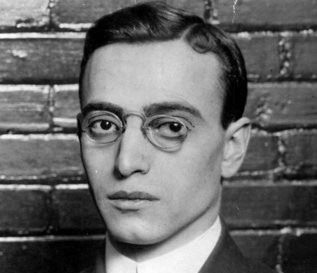|
Leo Frank Clemency File
Georgia Secretary of State
sos.georgia.gov
During the early morning hours of Sunday, April 27, 1913, the
body of thirteen year old Mary Phagan, an employee of the National Pencil
factory and a native of Marietta, was found in the basement of the National
Pencil factory. Although several men were arrested, including Newt Lee, the
night watchman who discovered the body, and Jim Conley, a sweeper employed at
the pencil factory, the accused was Leo Frank, the factory’s Jewish
superintendent from Brooklyn, New York. Frank was indicted for the murder of
Mary Phagan by a grand jury on May 24, 1913 and Jim Conley became the key
witness for the prosecution.
While the investigation drew on the local newspapers were
abound with stories related to the case in general, and Leo Frank in particular.
By the time the trial against Frank began on July 28, 1913, public opinion
against the accused was immense. In the courthouse, described as having a
“mob-like” atmosphere, Frank was found guilty of the murder of Mary Phagan by
the jury and sentenced to hang by the presiding judge.
Immediately following the trial, Frank’s defense team
requested a new trial. The presiding judge denied the appeal. Another motion for
a new trial was denied by the Georgia Supreme Court in February 1914. Beginning
in June 1914, Frank’s defense appealed to the Fulton County Superior Court to
set aside the guilty verdict. Fulton County Superior Court denied the appeal, as
did the Georgia Supreme Court (December 1914) and the United States Supreme
Court (April 1915).
As five courts upheld the original decision of the jury in
Leo Frank’s case, Frank then applied for clemency with the Georgia Prison
Commission to commute his sentence from death to life in prison. This
application was denied. Lastly, Frank applied to Governor John M. Slaton for
Executive Clemency.
One day before Governor Slaton was to leave
the Office of Governor, and two days before Frank was to hang, Governor Slaton
commuted the sentence from death to life in prison. Governor Slaton’s decision
did not correspond with public opinion, though. Approximately two months
following the Governor’s commutation, on August 16, 1915, Leo Frank was
kidnapped from the state prison in Milledgeville, taken to Marietta and lynched
by a group of angry citizens.
Document Descriptions
|
Document |
Description |
Date |
Images |
|
1 |
Letter of A. W.
Cozart to Prison Commission and Governor John Slaton |
21 May 1915 |
1 |
|
2 |
Letter of William
H. Felton to Prison Commission |
22 May 1915 |
1,
2
|
|
3 |
Letter of Thomas
W. Loyless (Augusta Chronicle) to Prison Commission |
13 May 1915 |
1,
2
|
|
4 |
Letter of Andrew
J. Cobb to G. H. Yancey, Prison Commission Secretary |
20 May 1915 |
1 |
|
5 |
Letter of A. M.
Hughlett to W. Woods White |
27 May 1915 |
1 |
|
6 |
Letter of Russell
K. Smith to Prison Commission and Governor John Slaton |
29 May 1915 |
1 |
|
7 |
Atlanta Ministers
petition to the Prison Commission and Governor John Slaton to
commute the sentence of Leo Frank |
No date |
1,
2,
3,
4
|
|
8 |
Application of Leo
Frank for Executive Clemency by Governor John Slaton |
22 April 1915 |
1,
2,
3
|
|
9 |
Letter of T. B.
Rice to R. E. Davison |
17 May 1915 |
1,
2
|
|
10 |
Letter of J. L.
Kiningham to R. E. Davison |
May 1915 |
1 |
|
11 |
Notification to
Hugh M. Dorsey of the application by Leo Frank for Executive
Clemency |
22 April 1915 |
1 |
|
12 |
Notification to B.
H. Hill of the application by Leo Frank for Executive Clemency |
22 April 1915 |
1 |
|
13 |
Letter of Hugh M. Dorsey to R. E. Davison, Prison Commission
Chairman |
22 May 1915 |
1,
2
|
|
14 |
Petition of Hannah G. Franklin to Prison Commission on behalf of
Leo Frank |
17 May 1915 |
1 |
|
15 |
Letter of A. G. Powell to Prison Commission and Governor John
Slaton |
19 May 1915 |
1,
2
|
|
16 |
Letter of T. L. Gantt to R. E. Davidson, Prison Commission
Chairman |
30 April [1915] |
1 |
|
17 |
Recommendation of Prison Commission to Governor John Slaton to
decline the application of Leo Frank for Executive Clemency |
9 June 1915 |
1,
2
|
|
18 |
Memorandum of Recommendation by T. E. Patterson, Prison
Commissioner, regarding the application for Executive Clemency
by Leo Frank |
No date |
1,
2,
3,
4,
5,
6
|
|
19 |
Untitled fragment implying opposition to the commutation of Leo
Frank’s sentence. |
No date |
1 |
|
20 |
Decision by Governor John Slaton to grant Executive Clemency to
Leo Frank |
21 June 1915 |
1,
2,
3,
4,
5,
6,
7,
8,
9,
10,
11,
12,
13,
14,
15,
16,
17,
18,
19,
20,
21,
22,
23,
24,
25,
26,
27,
28,
29
|
sos.georgia.gov
|

